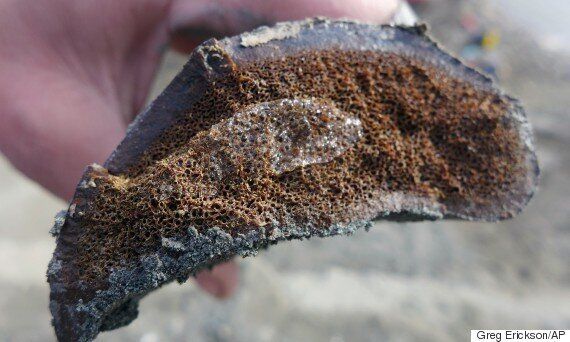Researchers believe there is a "lost world" of dinosaurs in the Alaskan region after uncovering the fossils of the duck-billed dinosaur, called Ugrunaaluk Kuukpikensi, which means "ancient grazer".
The herbivore is believed to have had scales and "Godzilla-like" plates coming out of its back.

Artist's impression of the Ugrunaaluk kuukpikensi
Experts said the Ugrunaaluk Kuukpikensi would have walked on its back legs, but could crouch on all fours.
Gregory Erickson, professor of biological science at Florida State university, said: "We found some new features which shows that this is definitely a new species.
"There is a whole different province of dinosaur up there [in Alaska], in fact we believe there is 13 different species of dinosaur up there and just about every single on of them looks a little bit off, relative to dinosaurs that lived at the same time down in Alberta, in Montanna.
"And so this has led us to believe that... everything up there was Arctic adapted, and this suggests that there was an Arctic province, basically what we think we are finding is a lost world, a lost world of dinosaurs out there that we didn't realise existed."
A collaborative team between Florida State University and the University of Alaska Fairbanks made the discovery and have been working in the region for the past five years.

A sample of frozen bone found after researchers excavated it from the Liscomb Bed in the Prince Creek Formation near Nuiqsut, Alaska
Ugrunaaluk Kuukpikensis is closely related to Edmontosauras, another duck-billed dinosaur found further south near Alberta, Montana, and South Dakota.
Several structural differences led researchers to determine that it was a different species.
Mr Erickson said it was "very exciting" to have discovered a new dinosaur - particularly in the Arctic.
The animal had a big, broad bill, and would have grazed low-lying plants, which it would grind them up "in a horse-like manner".
SEE ALSO:
Also on the Huffington Post UK:
